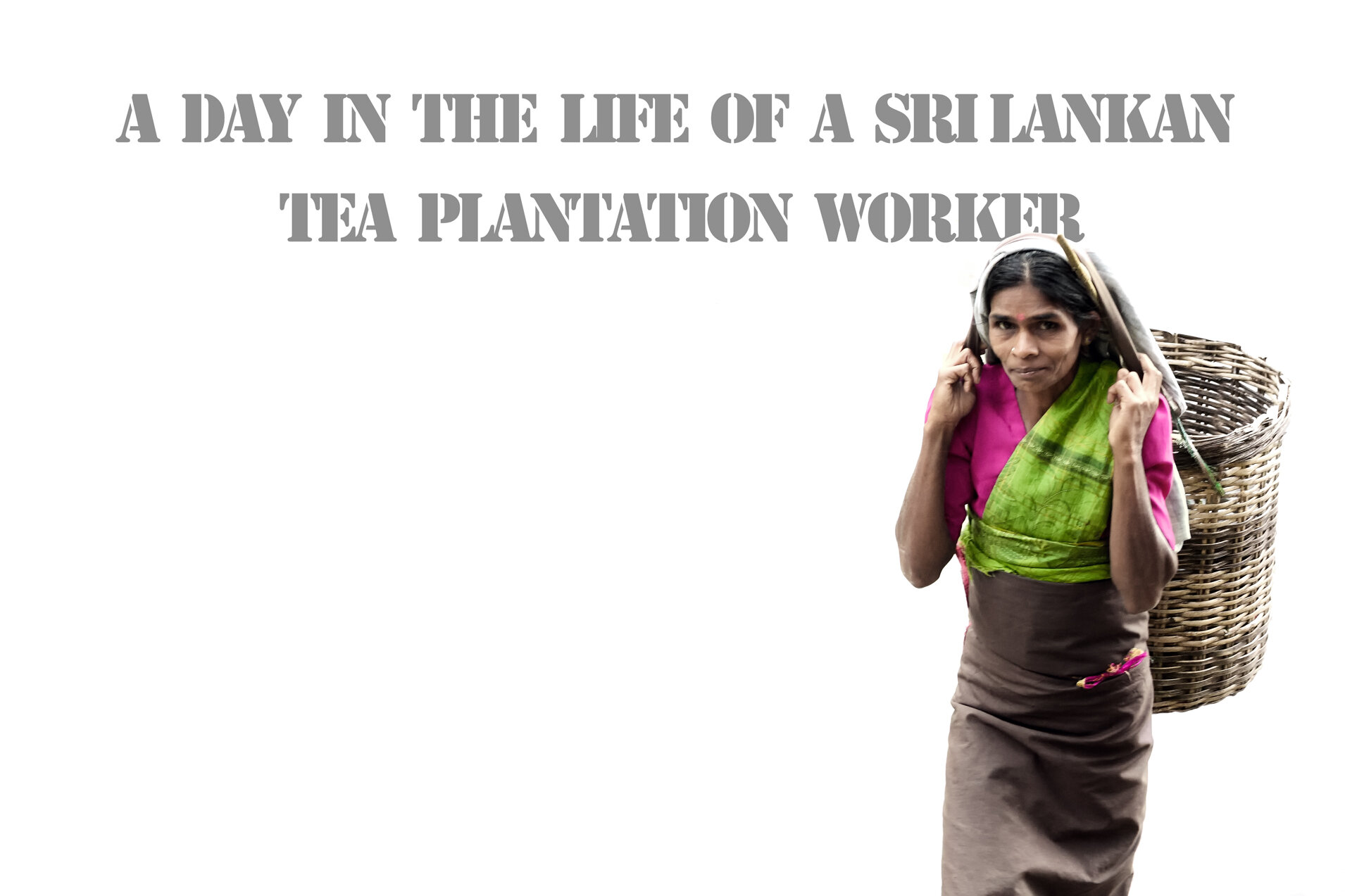
Copyright © Shantan Kumarasamy 2009
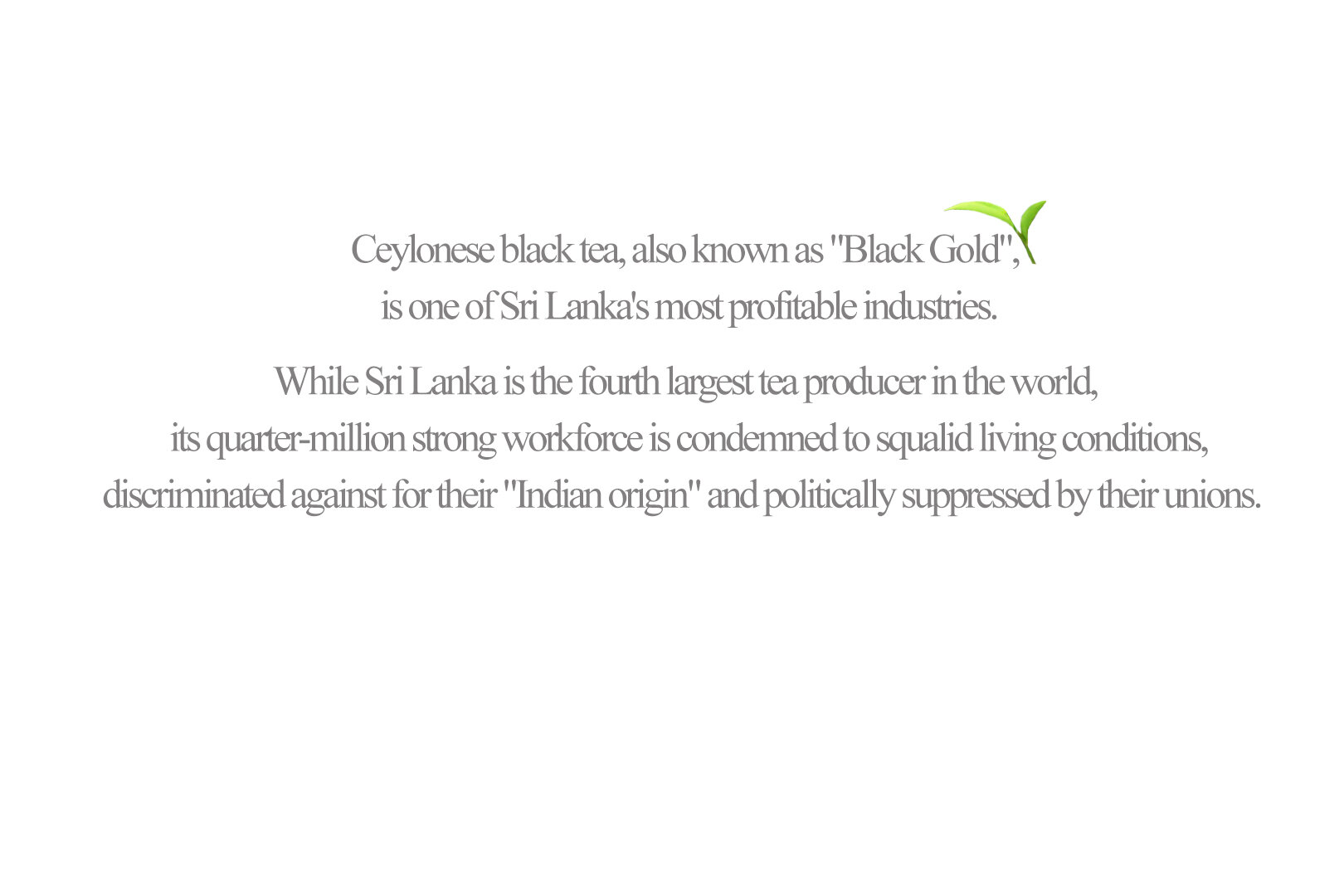
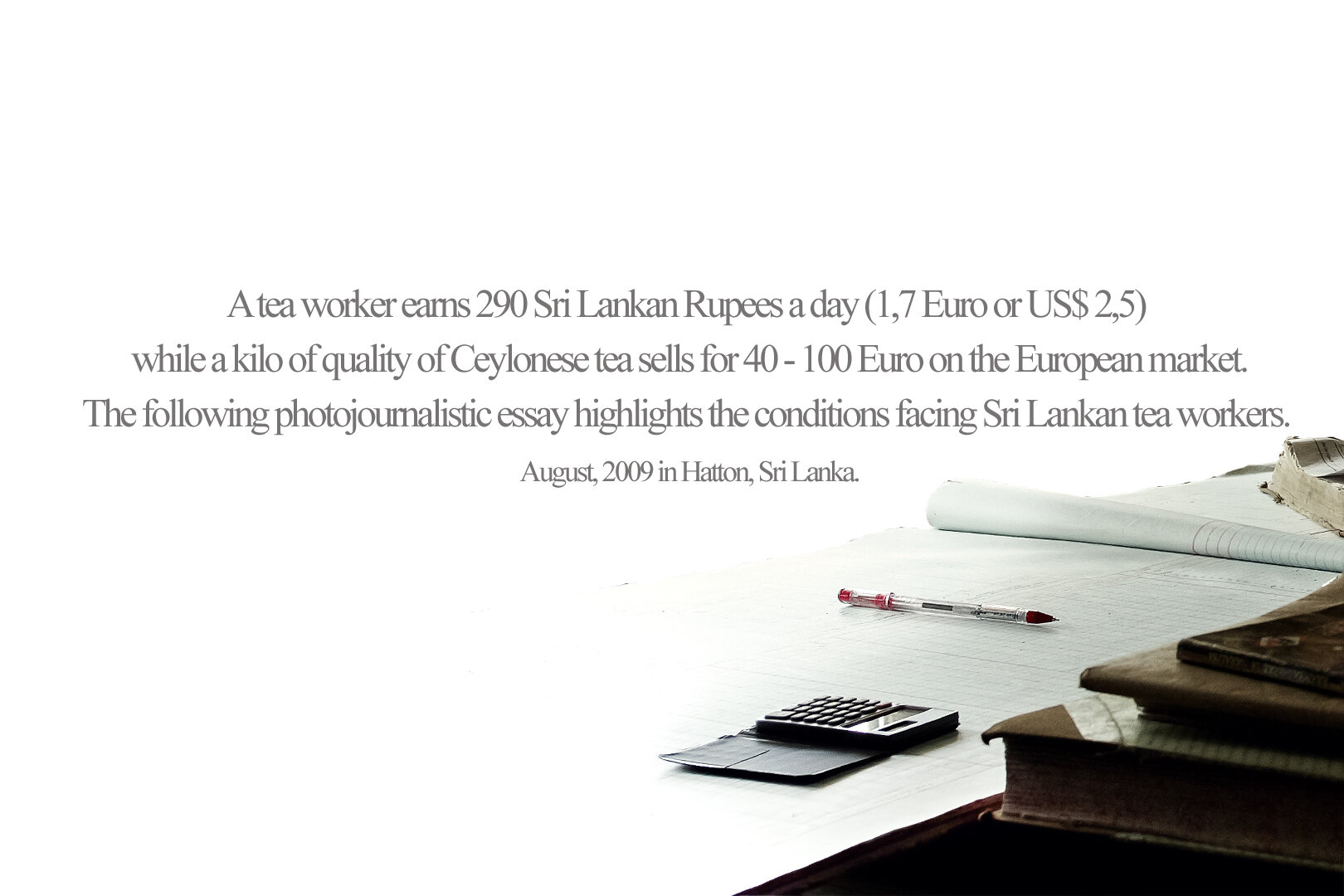
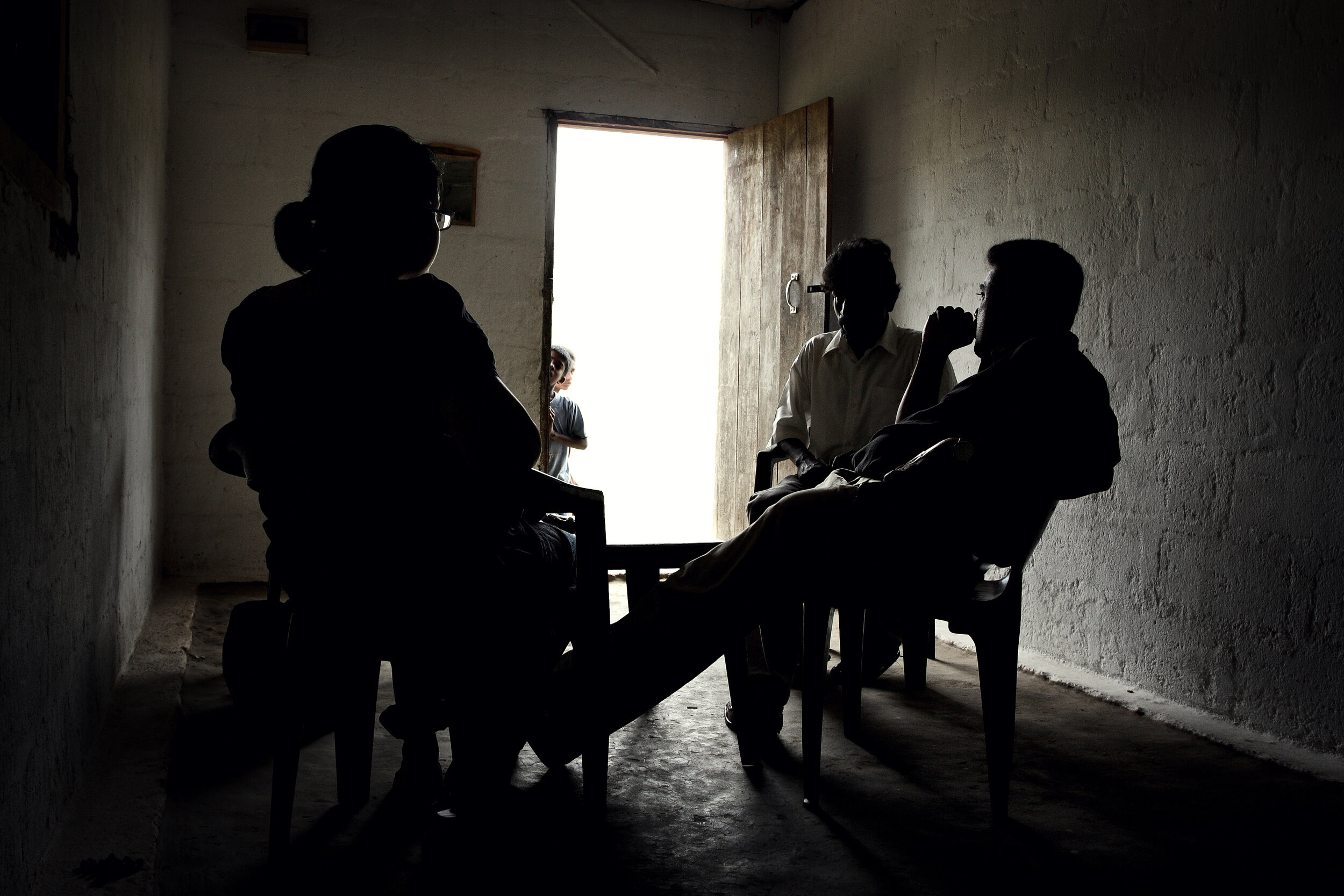
A Plantation worker (sitting next to the door) explains his deplorable working conditions.
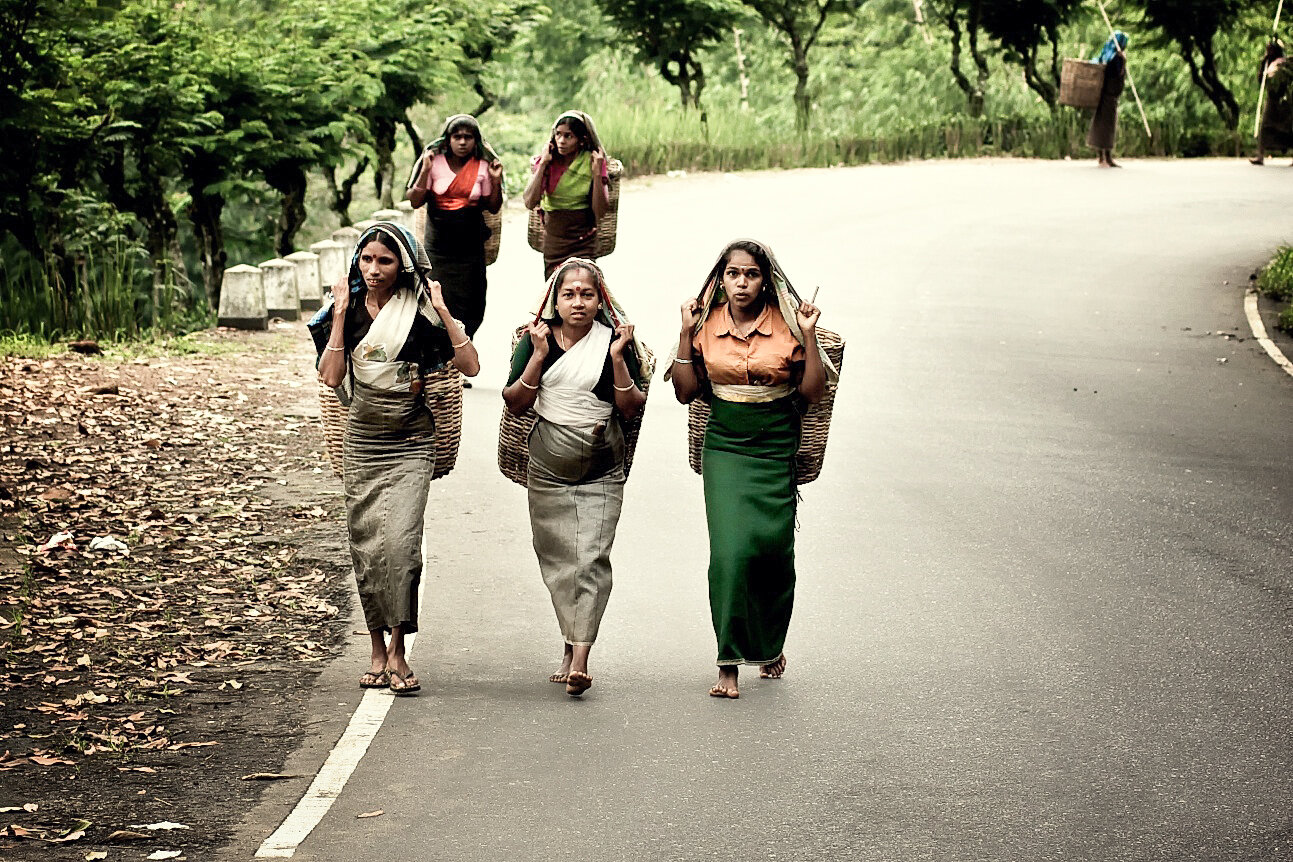
Tea Pluckers begin work at 8 a.m and continue until about 4 p.m., with a lunch break at 12:30 p.m. A female worker with children typically arises at 4:30 a.m and attends to her family before leaving for work. After her evening chores, she goes to bed at around 9 p.m.

The daily basic wage of a tea plucker is about 200 rupees, with a 70 rupee “Attendance Allowance“ and an additional 20 rupee allowance, but only if an 18-kilogram quota of tea leaves is met.
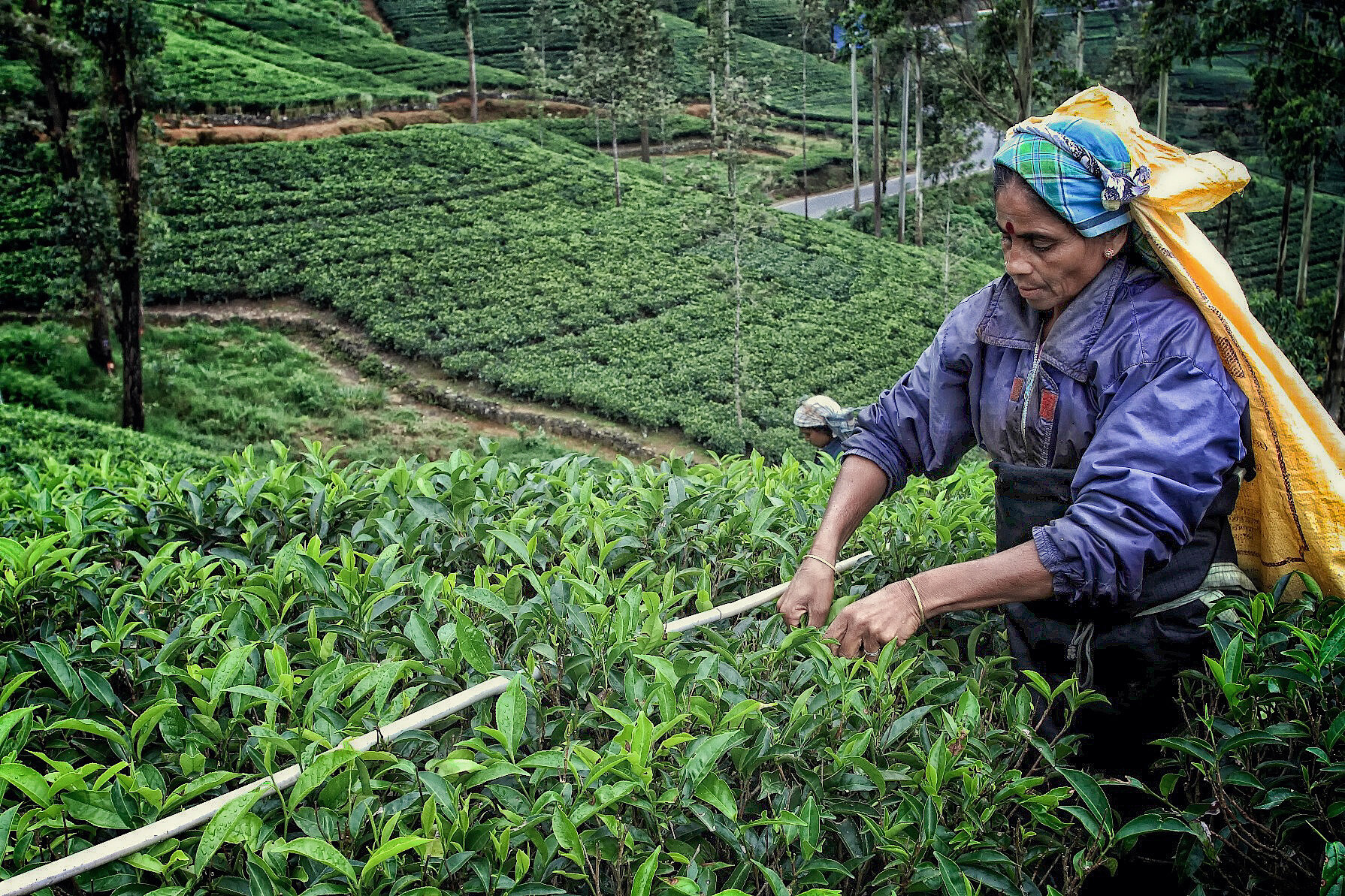
Plucking 18kg of tea is often impossible during the rainy season. The workers are supervised by a “Kanganey“, or group headman, who ensures targets are met.
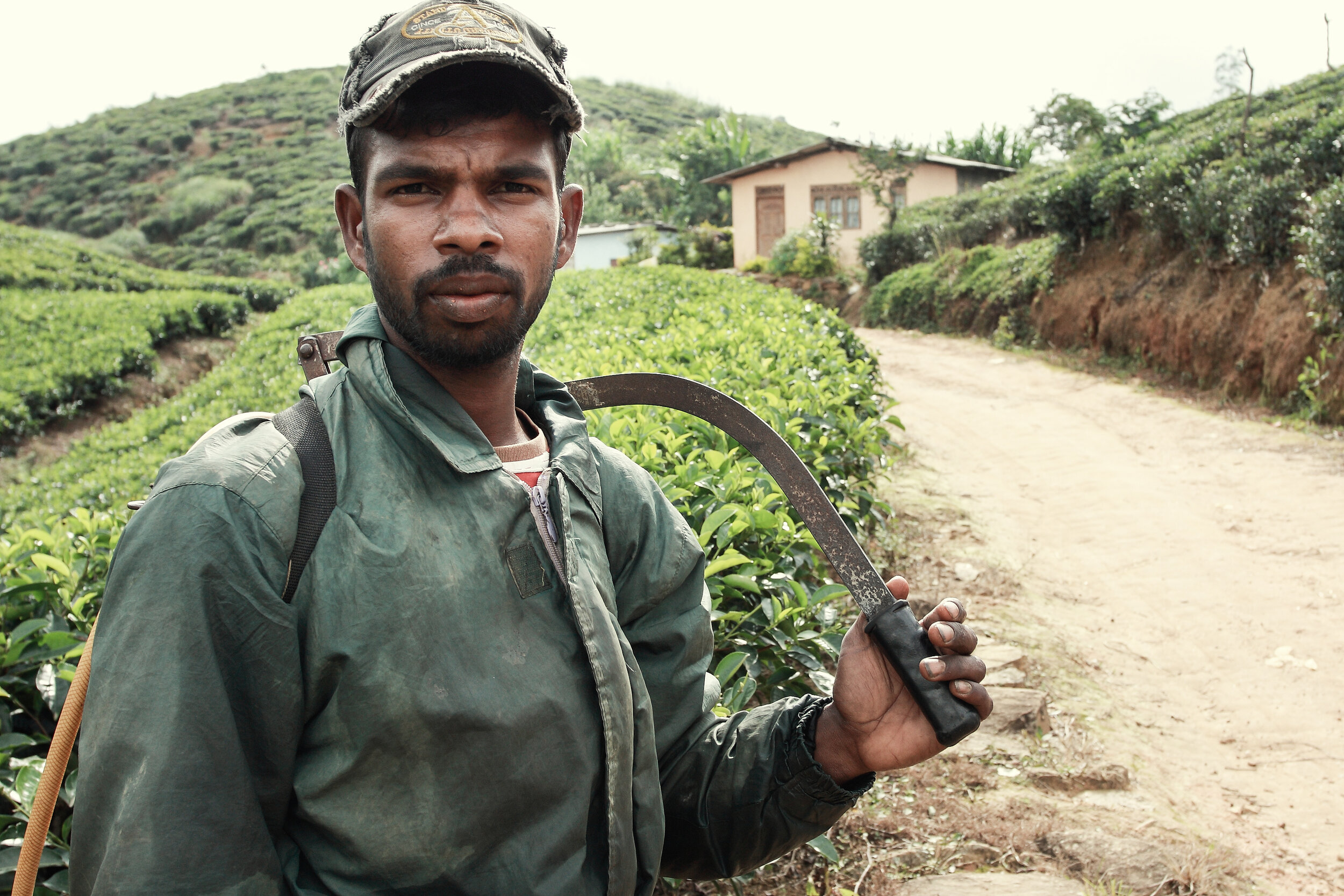
A fertiliser worker,28, has respiratory health problems due to his exposure to dangerous chemicals. He pays 350 rupees each year for his “safety jacket”. The nearest government hospital is miles away. The only transport is by lorry.

Fertiliser workers have to cover one hectare a day.
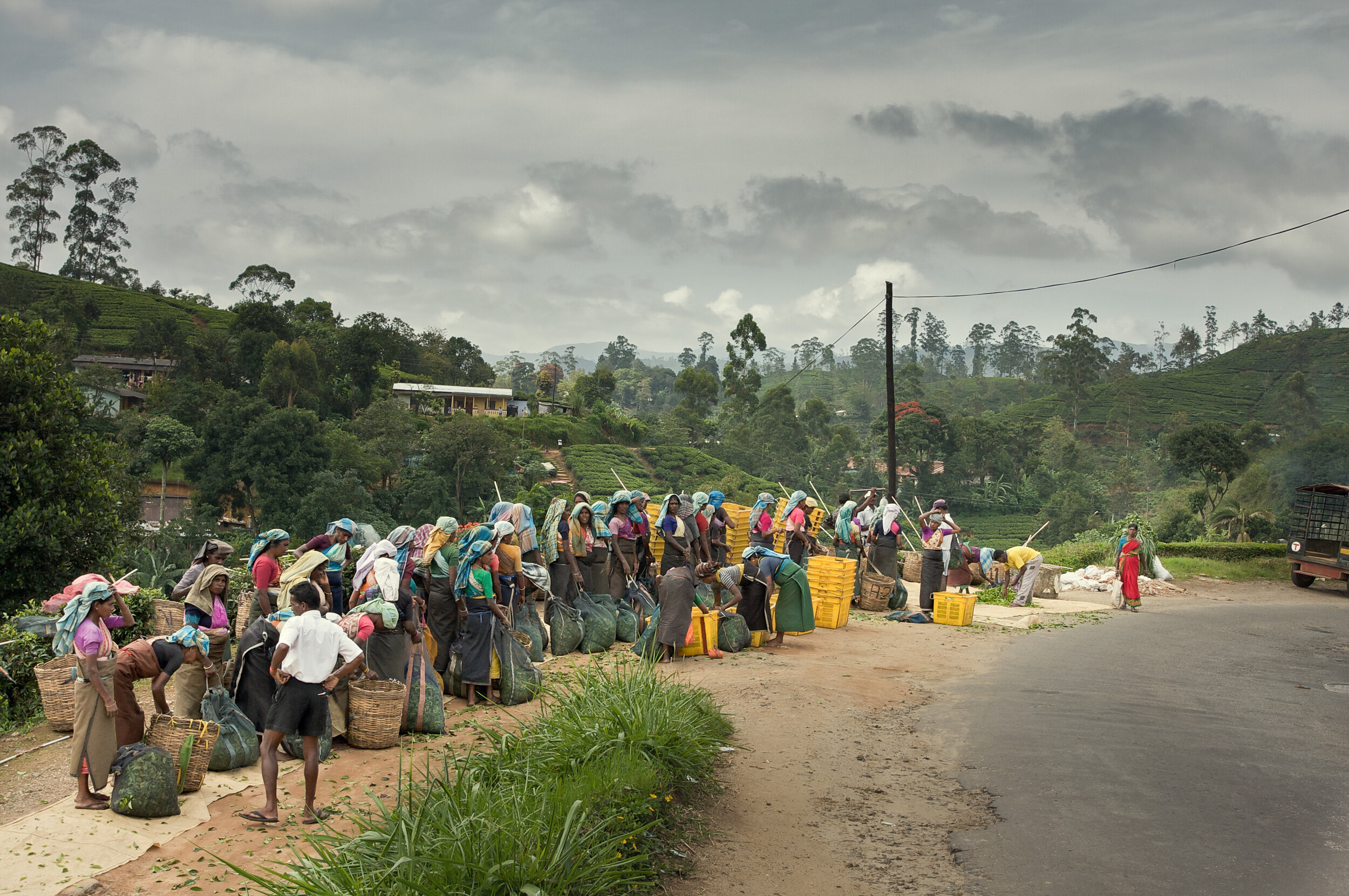
Workers turn in their first load of leaves before noon and wait for them to be weighed, sorted, and sent to the tea factory.
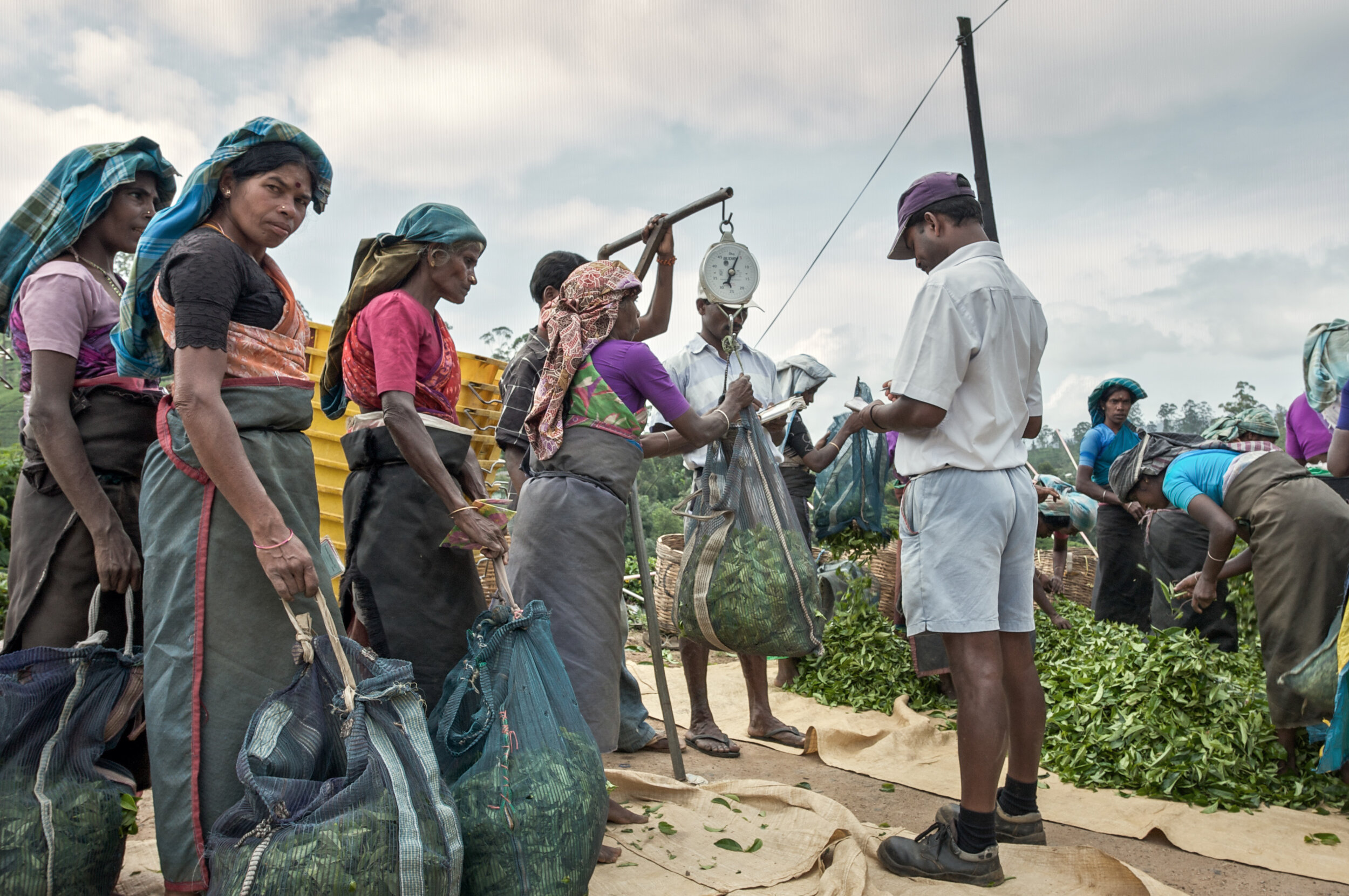
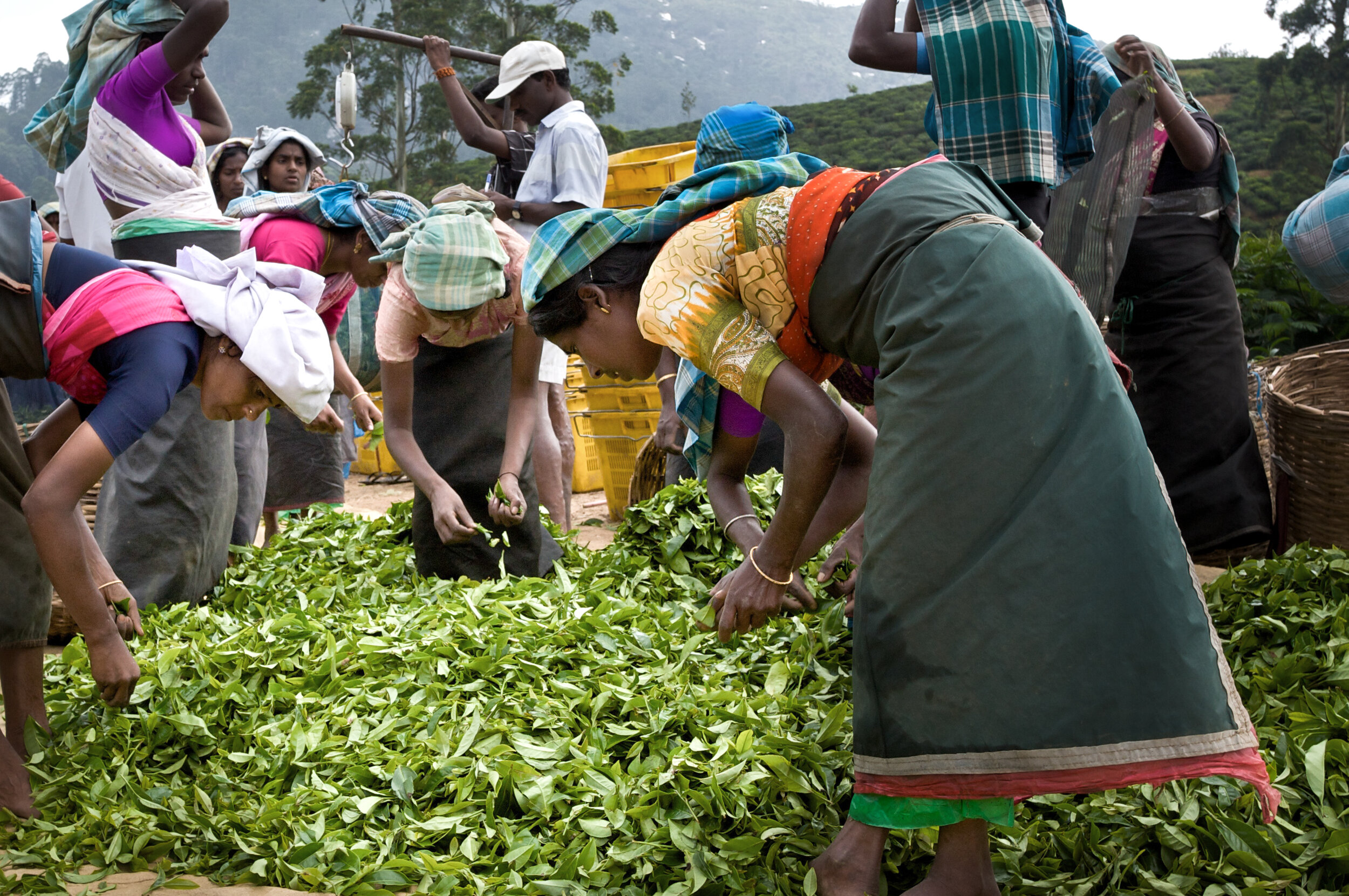
Checking the collection before sending it to the factory.
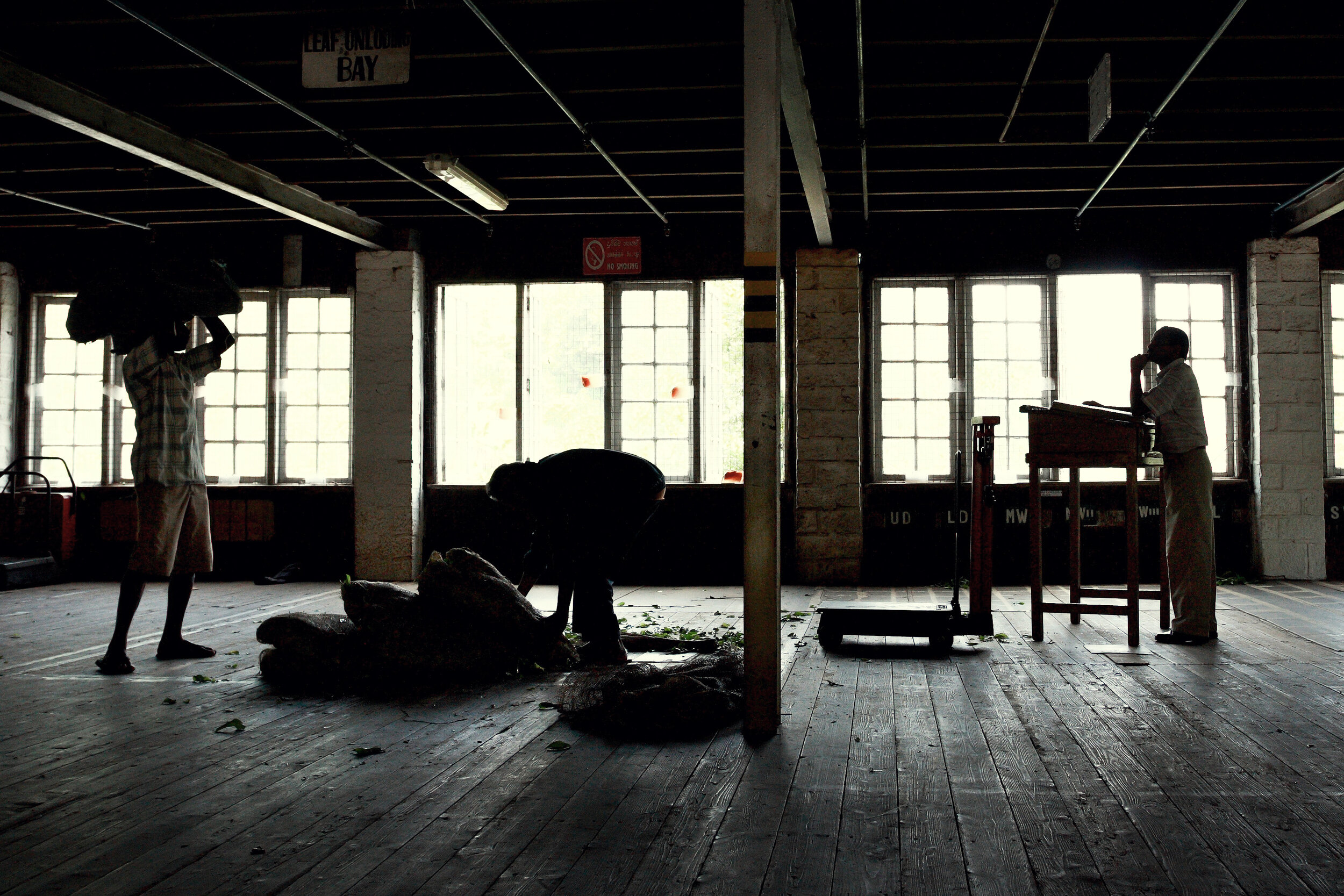
The plucked tea is spread to dry, then processed, fermented, fired, and graded.

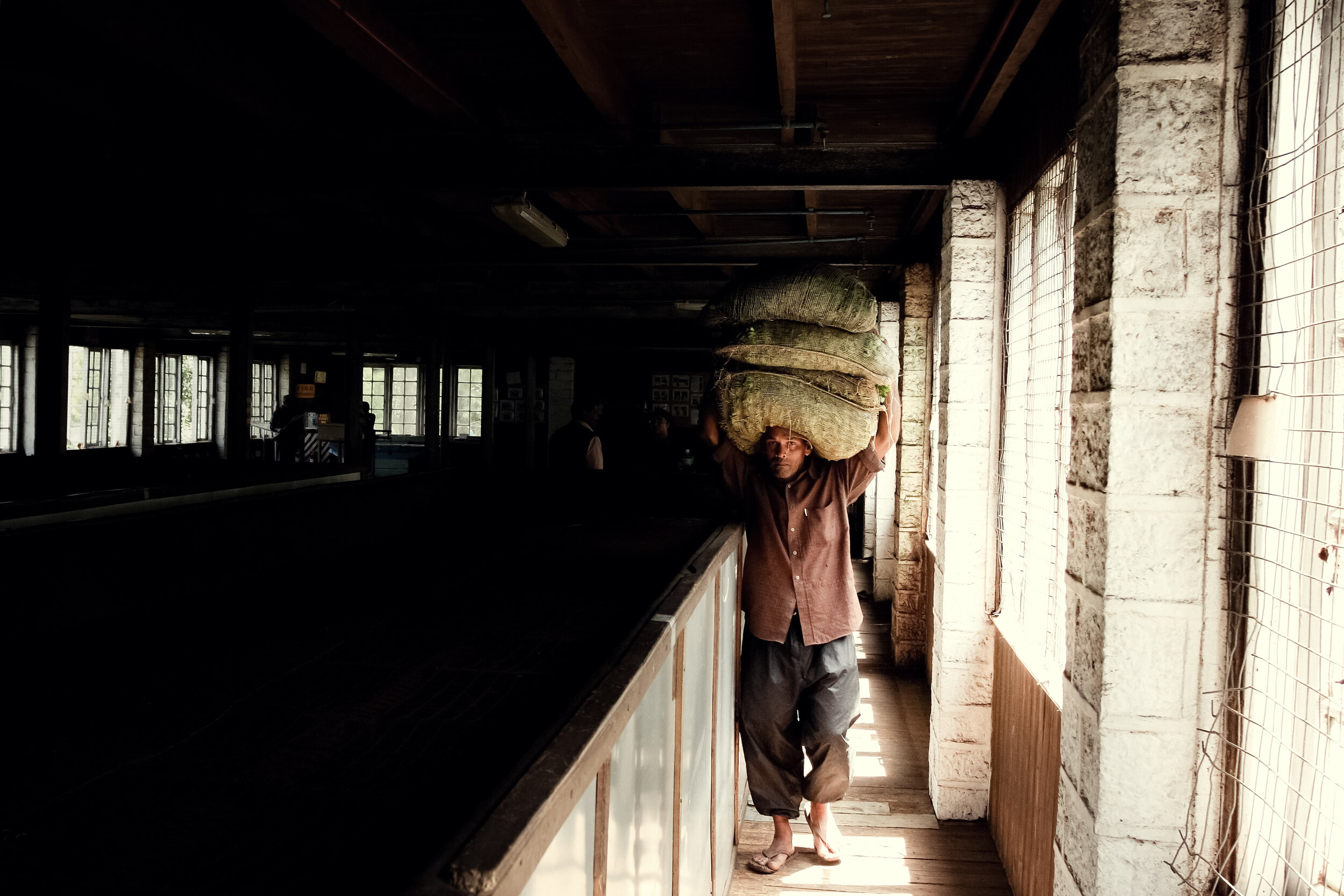
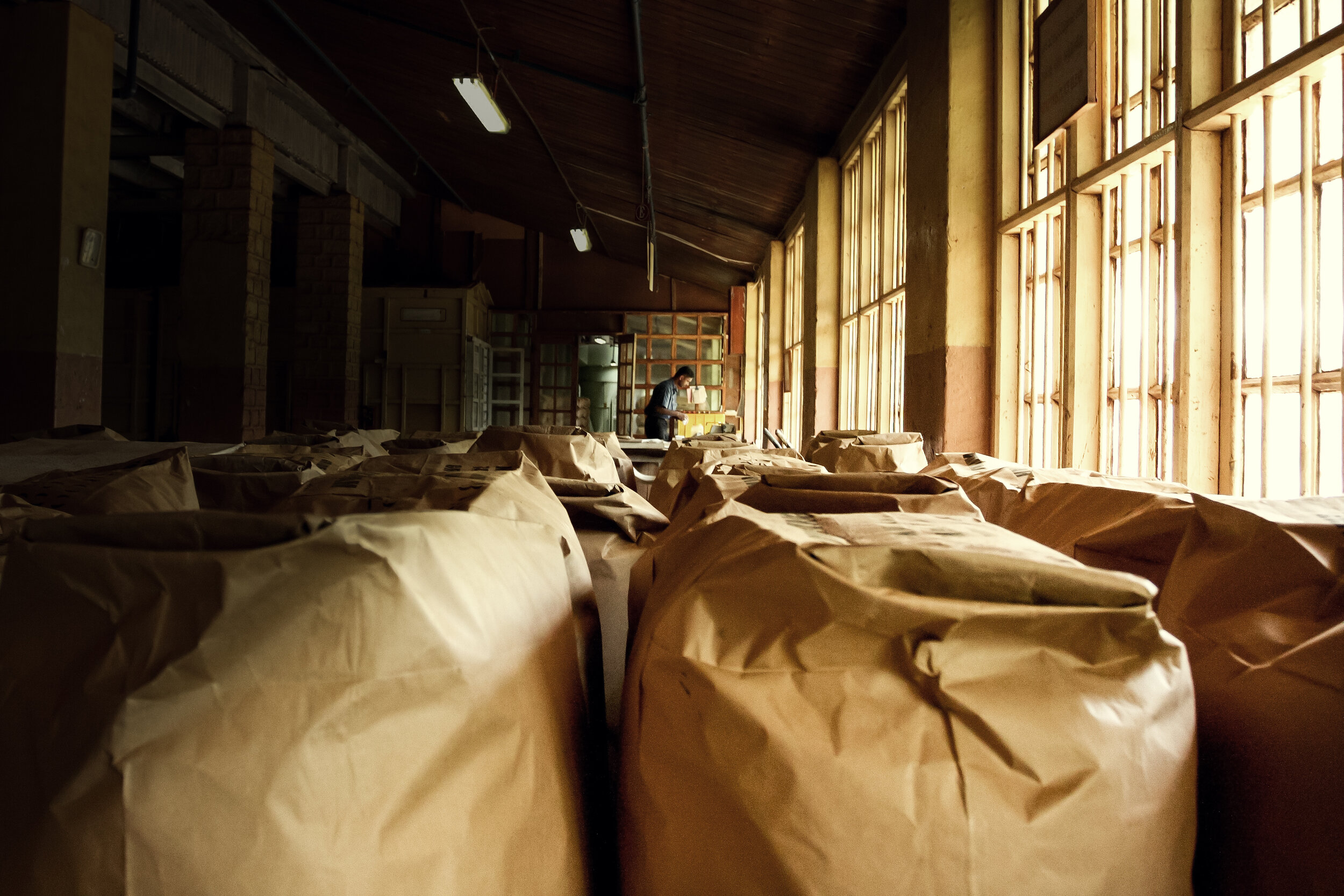
Packing the graded tea: Silver tips, Broken Orange Pekoe, Broken Orange Pekoe Fannings, Dust 1, Dust 2.
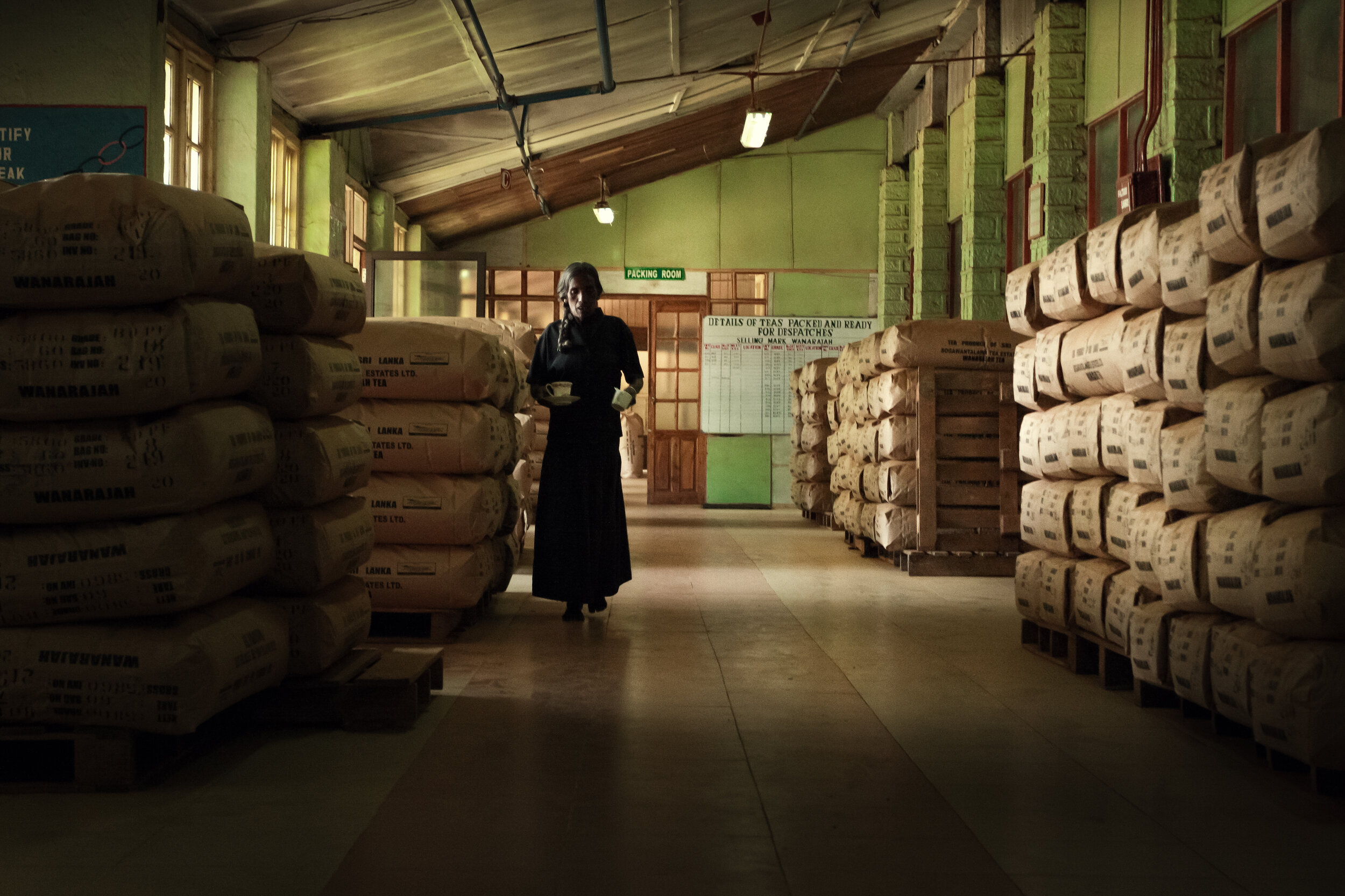
Ready for the Colombo Tea Auction, where the produce is priced, purchased, and distributed to local and international markets.
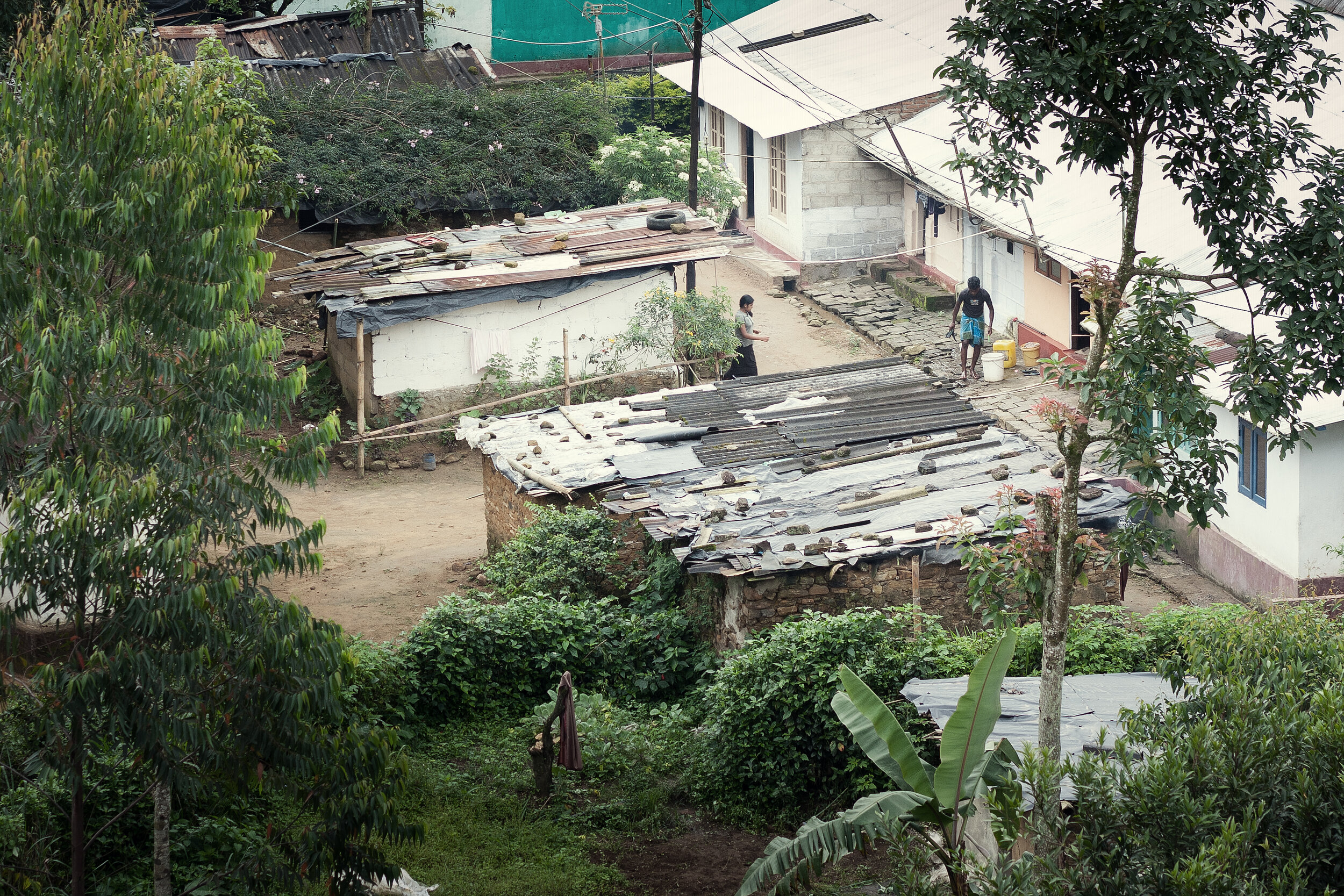
The worker’s “line-rooms”- long structures divided into single rooms, one per family.

A worker at the entrance of his “line-room”- long structures divided into single rooms, one per family.
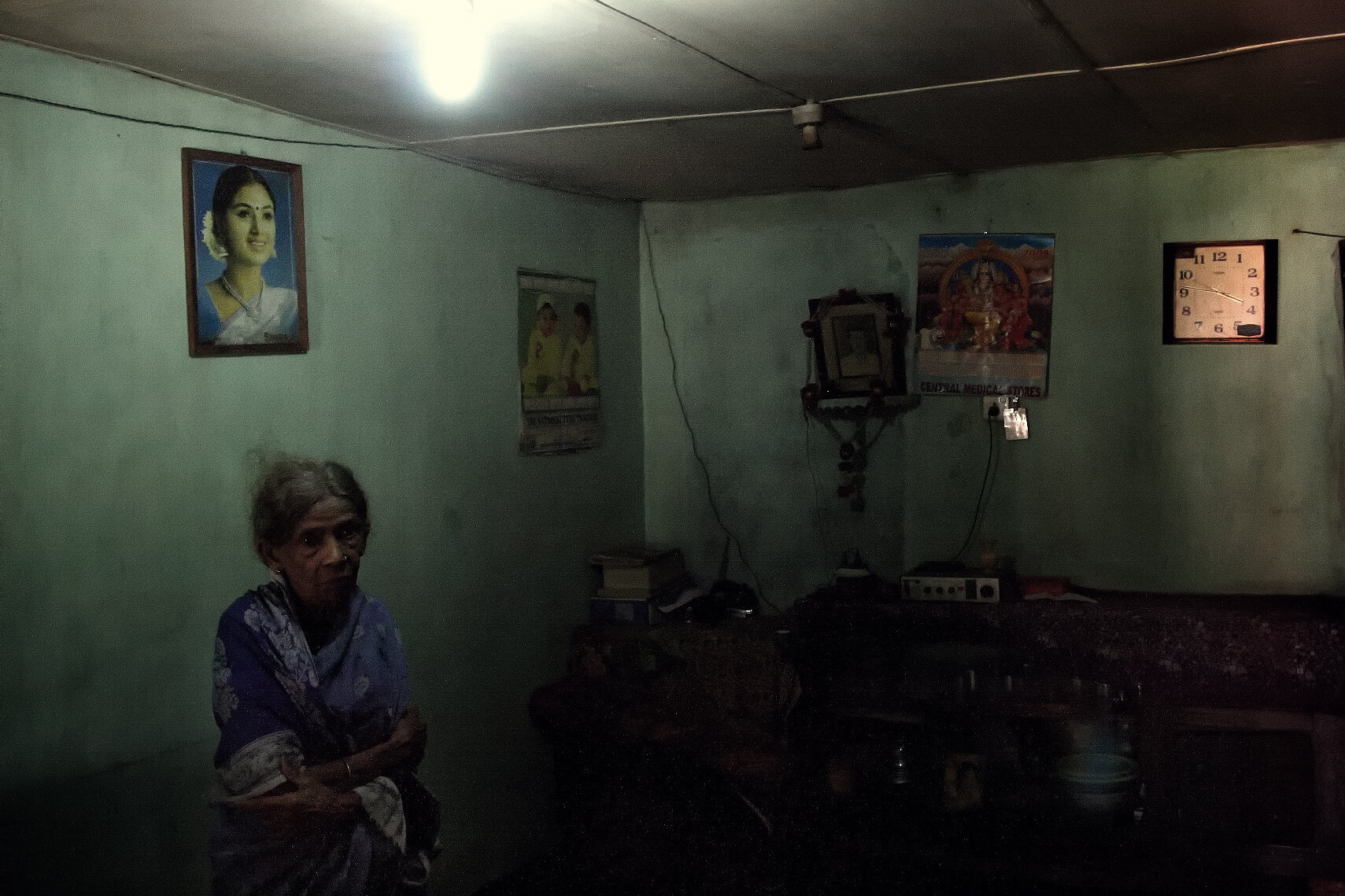
His mother in the “living room”. As families have grown, the tiny units have been further partitioned.
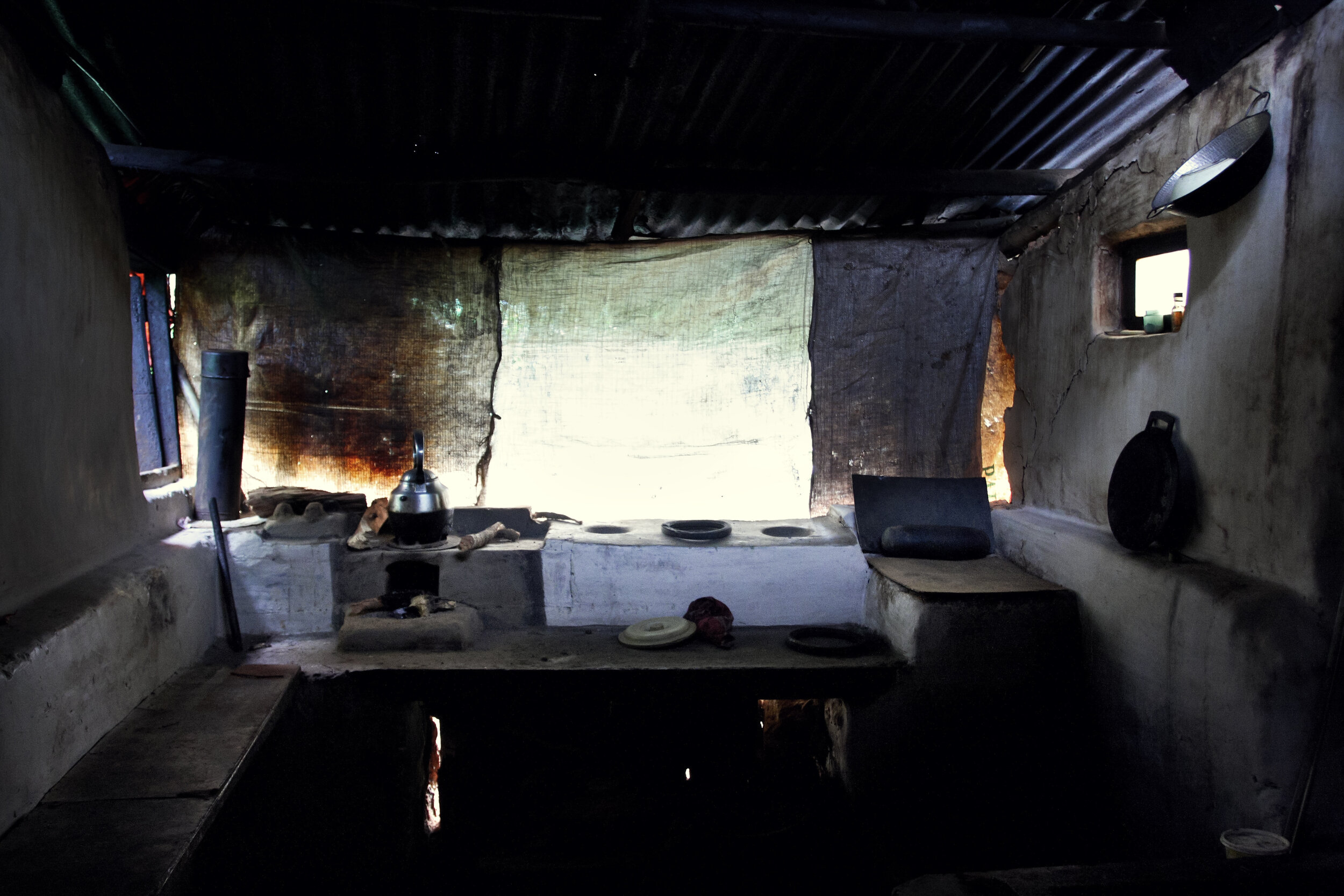
The outer wall been washed away by rain, polythene fertiliser bags become a substitute wall. Most dwellings were built by British colonial planters and have undergone little renovation since.
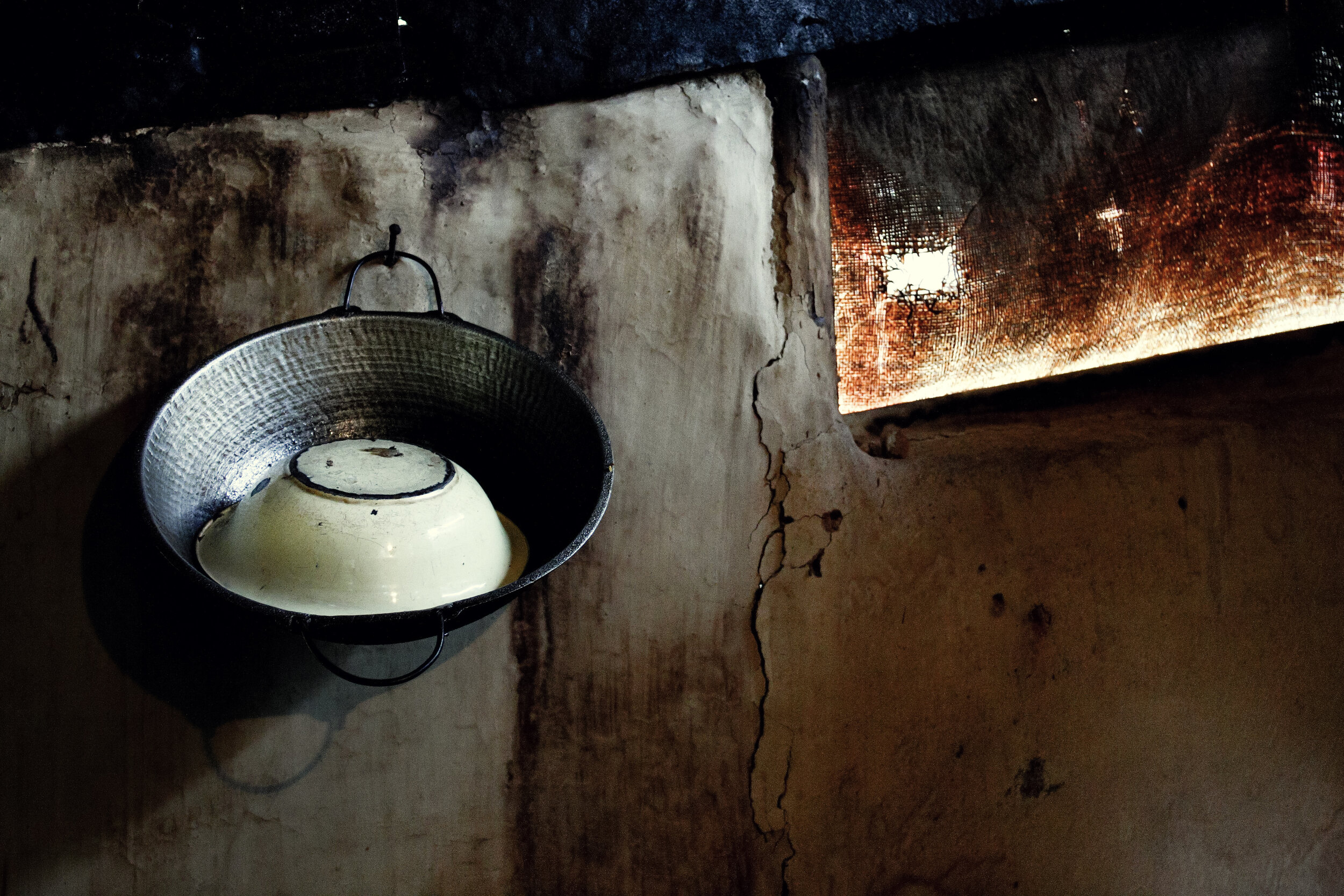
Plantation workers generally eat rice with 1-2 vegetables and can only afford fish or meat on their pay day.
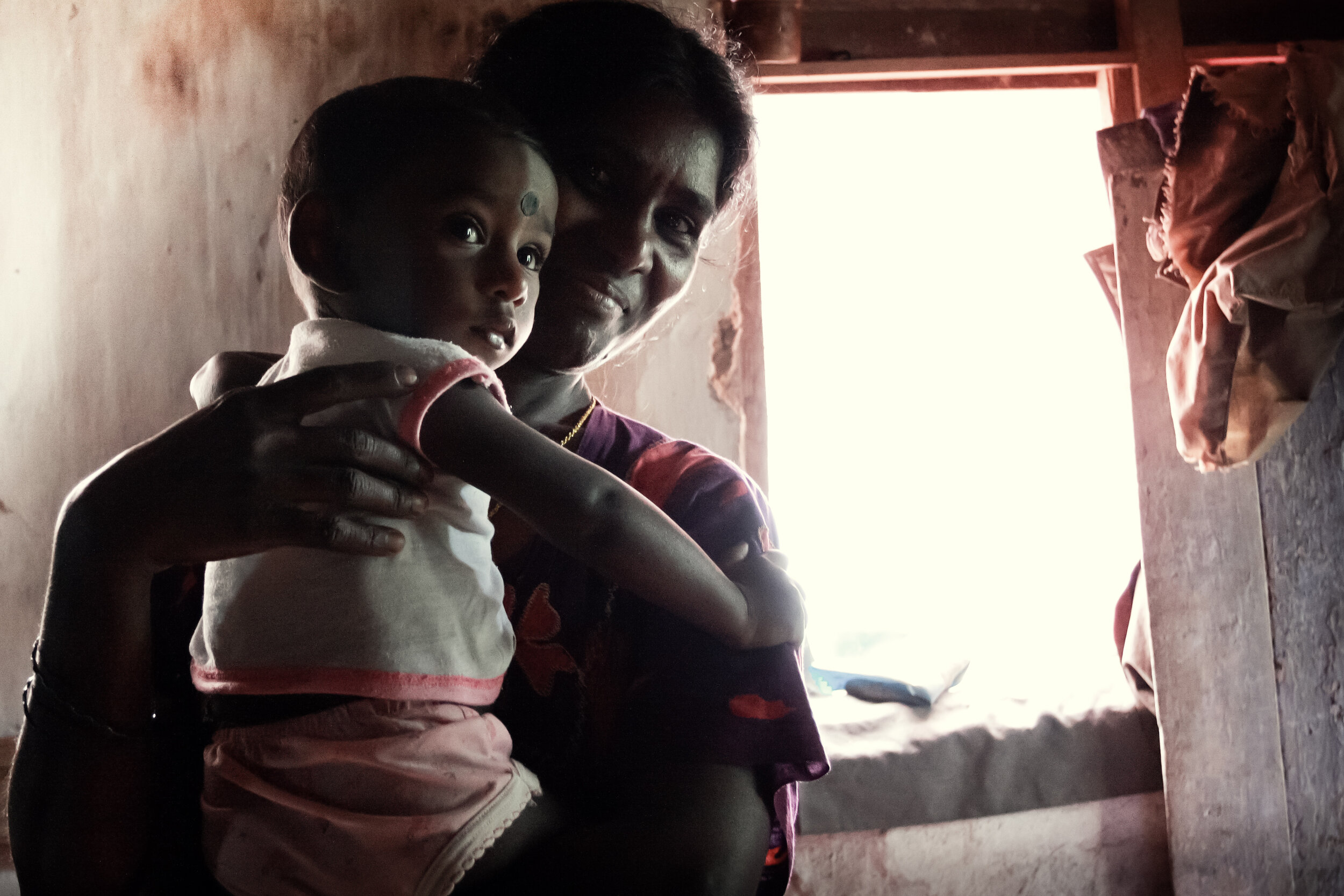
A plantation worker with her infant.
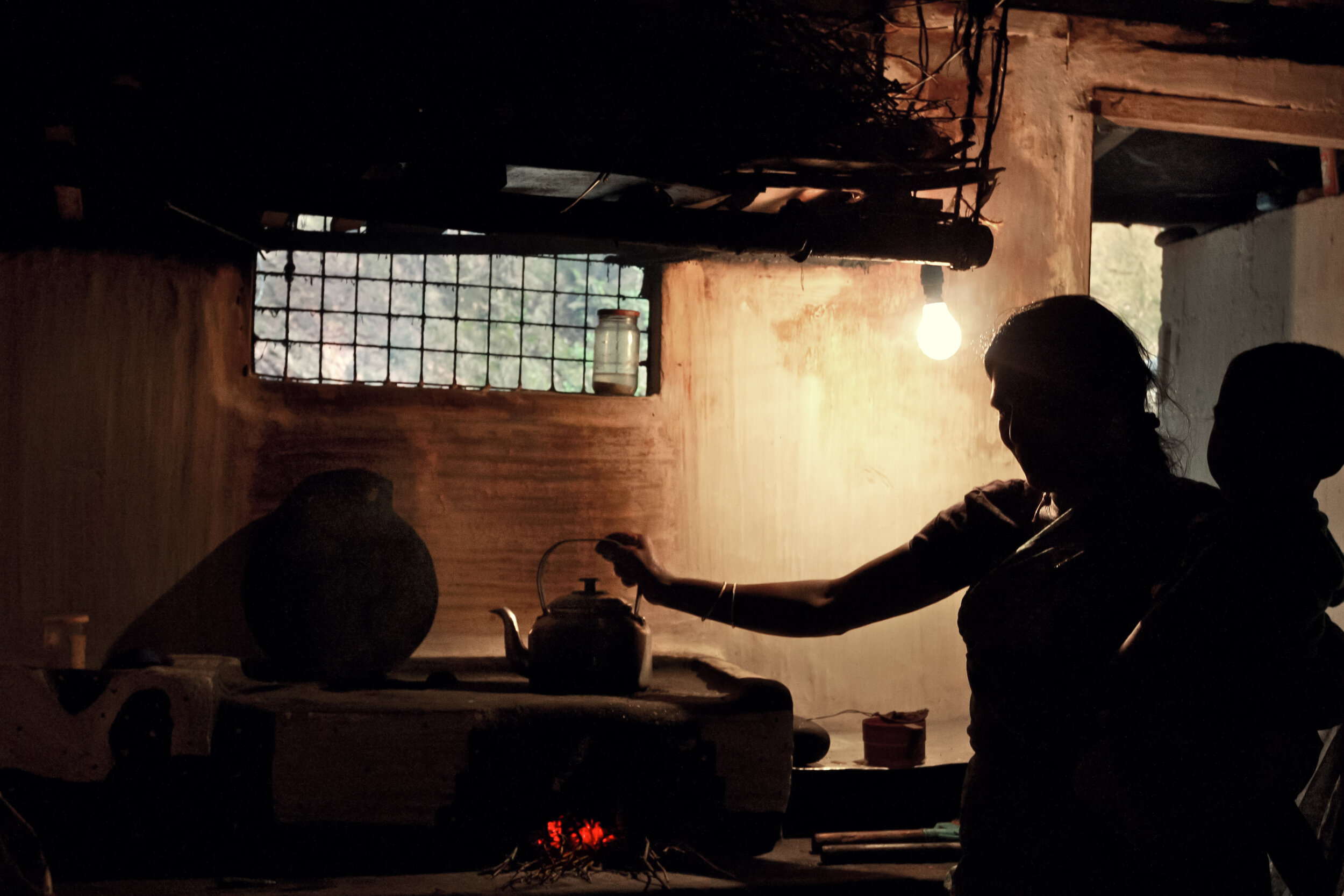
After a long day, a cup of dust tea, the waste or a low-quality tea, which is considered not suitable for export.
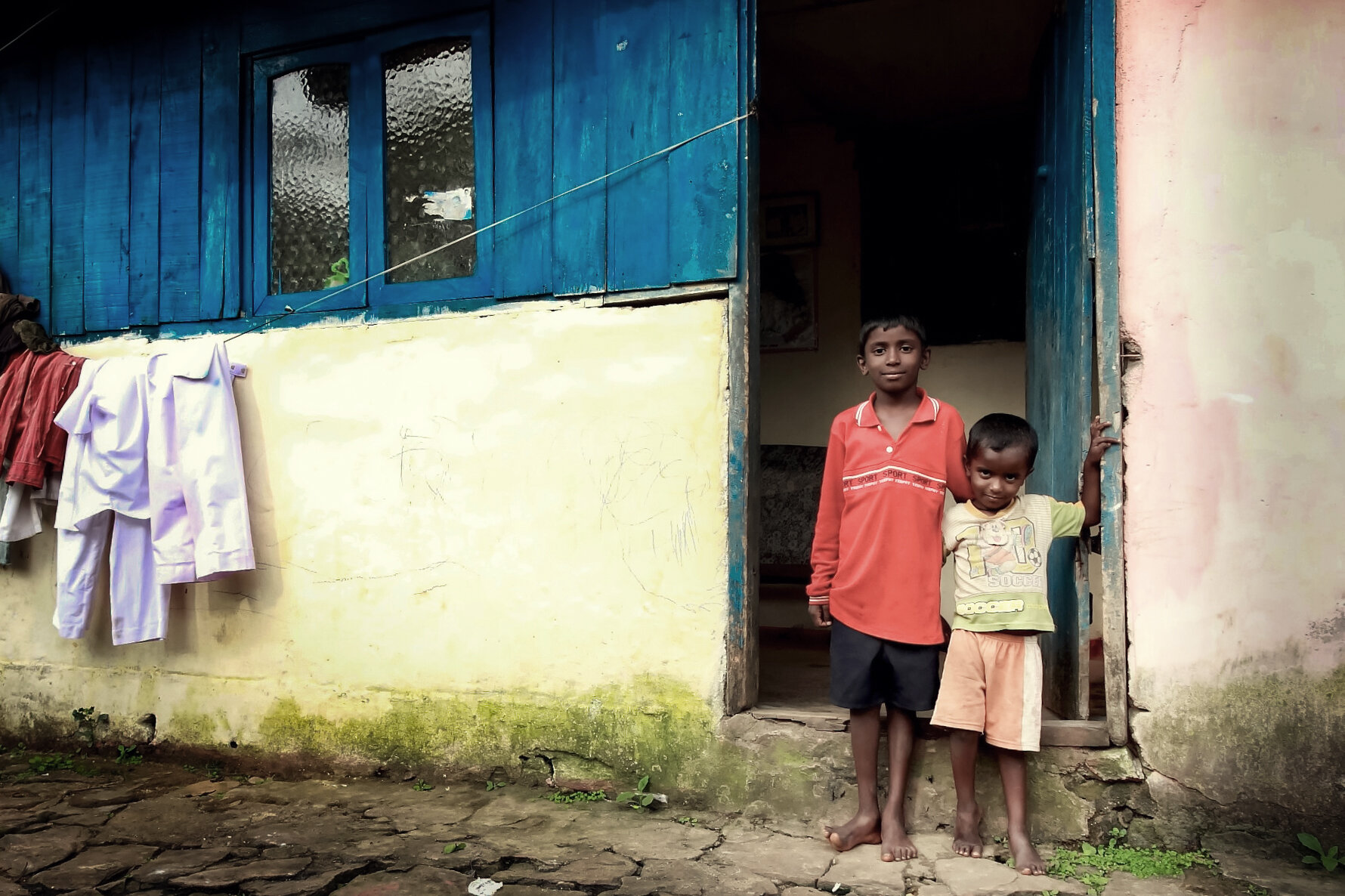
Education facilities for plantation children are poor. Most plantation youth leave school by Grade 6 or 7, and in some cases even earlier, due to economic hardship.
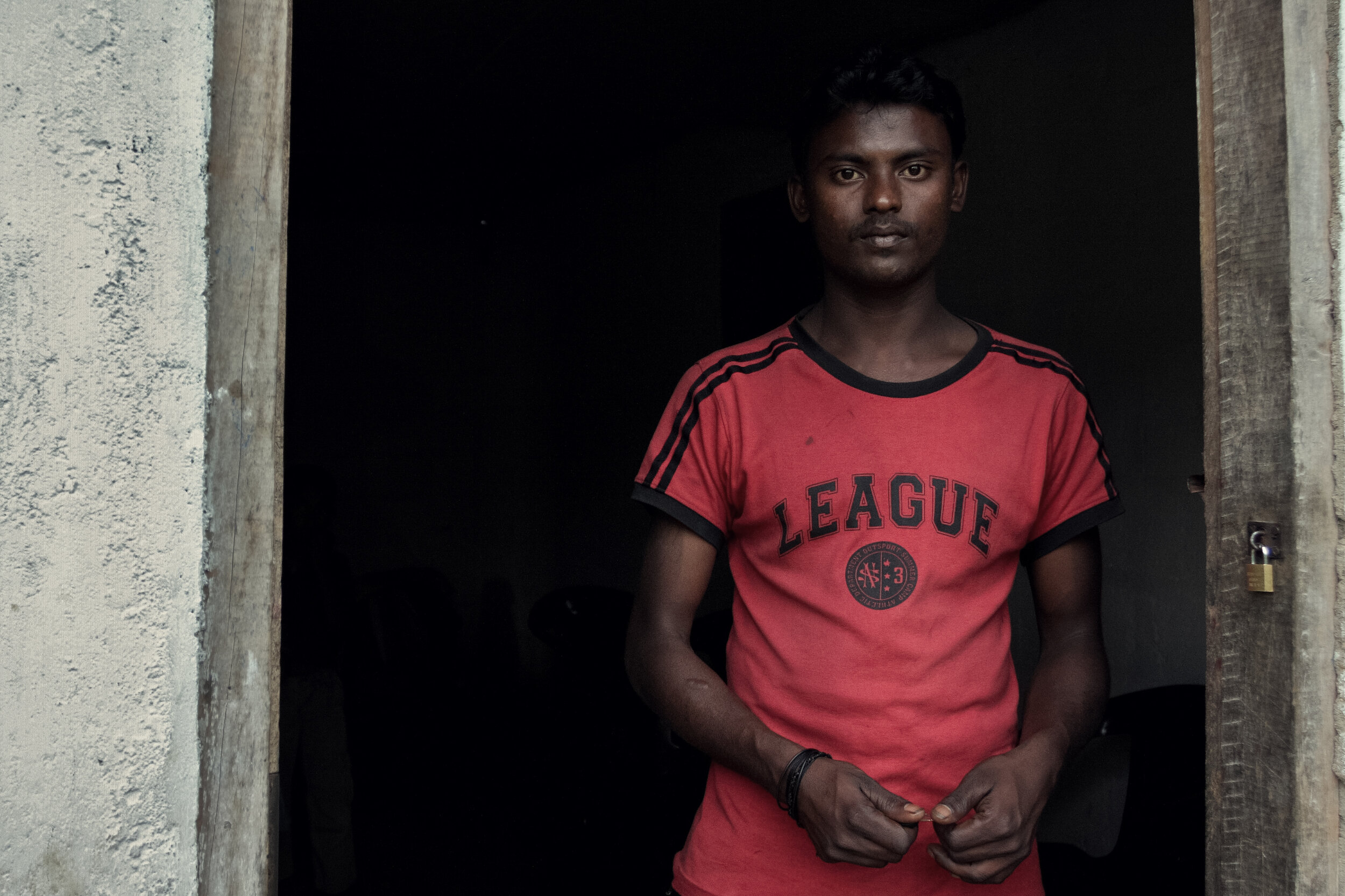
The son of a plantation worker,26, the family‘s sole bread-winner.He drives a three-wheeler taxi and pays about 300 rupees per day to its owner, irrespective of he has fares or not.
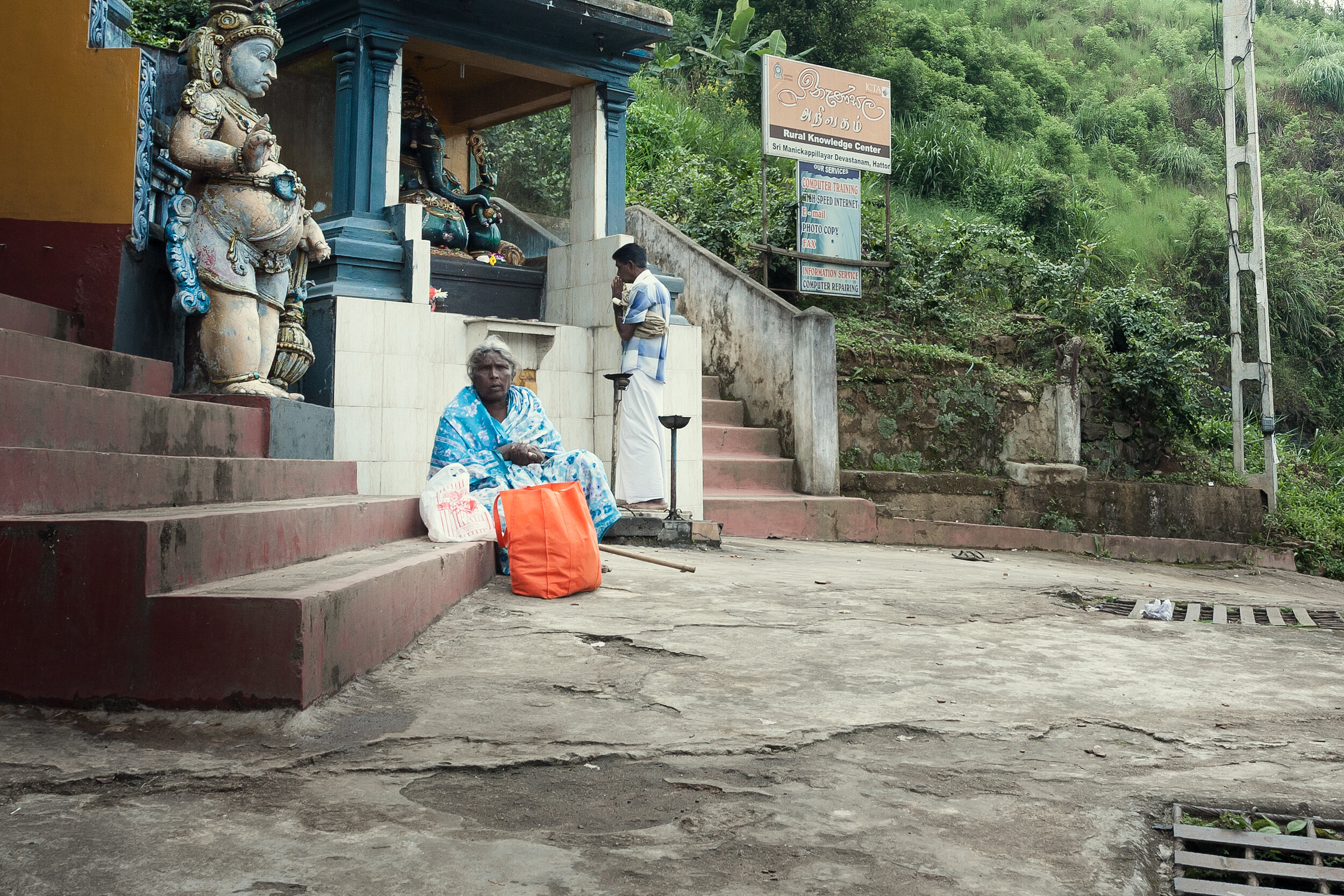
A retired plantation worker begging outside a Hindu temple.



























